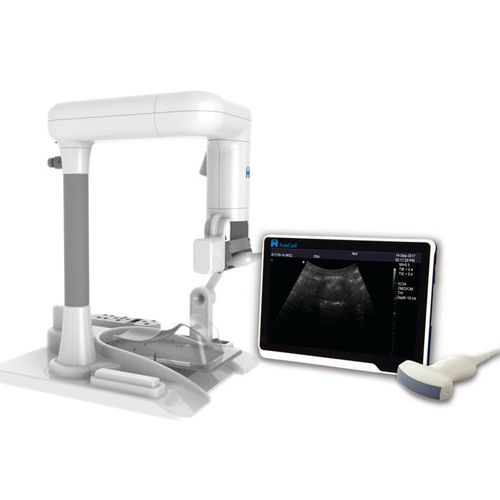
Obstructive sleep apnea detection remote-controlled ultrasound system AmCAD-UOrobotic

Add to favorites
Compare this product
Characteristics
- Applications
- for obstructive sleep apnea detection
- Options
- robotic
Description
Obstructive sleep apnea is a potentially serious sleep disorder. It causes breathing to repeatedly stop and start during sleep.
CURRENT DETECTION METHODS
The most common detection method is polysomnography, which suffers from a number of disadvantages
PSG requires overnight testing at a sleep center or static location.
Patients can wait up to 6 months for PSG at a sleep center.
Uncomfortable overnight stay affects the quality of sleep.
Simple tossing and turning during sleep can loosen electrode patches and affect signals
AmCAD-UO offers 10-minute detection for obstructive sleep apnea on awake patients, helping doctors to evaluate the root cause of sleep apnea and offer assessment for moderate/severe OSA patients. With laser-guided positioning, AmCAD-UO can precisely scan upper airway and analyze the gap between normal breathing and Müller Maneuver models. AmCAD-UO system standardizes ultrasound transducer scanning to reduce intra-observer variations and make the assessment consistent.
CURRENT TREATMENTS CHALLENGES
Effectiveness is difficult to evaluate for different OSA treatments leading to low compliance rate
Noncompliance rate up to 68%
AmCAD-UO COMPANION DIAGNOSTICS
Immediate 3D Anatomic Airway Assessment for Treatment Evaluation
Laser-Guided
Positioning and Automated Scanning
Collect and Analyze
Ultrasound Images
3D Airway Assessment
Assessment report
VIDEO
Catalogs
AmCAD-UO
3 Pages
Related Searches
- Analysis software
- Radiology software
- Viewer software
- Tablet PC software
- Laboratory software
- Diagnostic software
- Design software
- Acquisition software
- Evaluation software
- CAD software
- Interpretation software
- Real-time software
- Ultrasound imaging software
- Cell imaging software
- Remote-controlled ultrasound system
- Robotic remote-controlled ultrasound system
*Prices are pre-tax. They exclude delivery charges and customs duties and do not include additional charges for installation or activation options. Prices are indicative only and may vary by country, with changes to the cost of raw materials and exchange rates.






